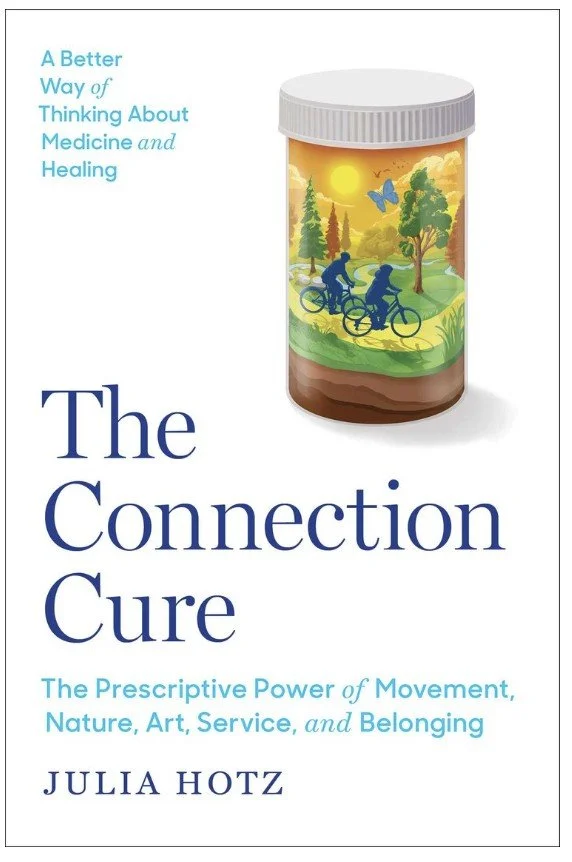Blog
“Assume it’s possible”: reflecting on one year of The Connection Cure
August 18, 2025
By Julia Hotz
Three years ago, sitting in the courtyard of the social prescribing birthplace, I was interviewing the social prescribing godfather, Professor Dr. Sir Sam Everington OBE, when he gave me the best advice: “Assume it’s possible.”
Image caption
For Sam (he says we can call him that), that’s the mantra that helped social prescribing go from what it was to what it is: What began in the 1990s as a doctor doling out yoga class “prescriptions” in an old London church has become an unstoppable global movement spanning 32 countries. He didn’t ask for permission. He didn’t balk at the potential of bureaucrats shutting him down. He didn’t pay mind to skeptics who thought getting fellow doctors, community groups, and insurers on board would be impossible.
He just assumed social prescribing was possible. And he was right.
I’ve thought about Sam’s advice a lot the past year, as I watched The Connection Cure, my book on social prescribing hit the shelves, and see the concept gain new attention on podcasts, radio shows, TV spots, articles and op-ed pages. Whenever an out-of-the-box idea gains steam— especially in healthcare, especially in the United States, and especially in this weird political moment—there will always be naysayers. In comment sections and book reviews, I’ve heard just about every reason why social prescribing is impossible: Insurance companies would never pay for it. Medical schools would never teach this. Doctors and therapists are too busy. Hospitals are too worried about their own profit. Patients are too addicted to quick fixes.
But then, in the background and on the frontlines, people are quietly assuming the opposite: “Social prescribing is possible - and I’ll show you how.”
In the past year, I’ve seen social prescribing get buy-in from a wide range of voices — from the queen of science podcasts Alie Ward to the (literal) King of England, from CNN’s famous Michael Smerconish to reality TV’s famous Kourtney Kardashian. I’ve seen the former U.S. Surgeon General Vivek Murthy make the case for it in his “Parting Prescription for America” and the World Health Organization do the same. I’ve seen the Centers for Medicare & Medicaid Services, the Department of Veteran Affairs, and the National Endowment of the Arts all renew their investment in social prescribing. And across the nation, I’ve seen more than 40 social prescribing programs emerge.
This past year has seen lots of other firsts for the movement, too: Massachusetts Cultural Council launched the nation’s first statewide arts prescription program. New Jersey Performing Arts Center expanded their partnership with Horizon Blue Cross Blue Shield, the first insurer to cover social prescriptions. San Mateo, California became the first county to declare loneliness an emergency, and plans to include social prescribing as part of its response. The “Arts for Everybody” campaign hosted a first-of-its-kind one day celebration of arts and health across 18 cities and towns.
But this, I know, is only the beginning— and this is where you can help.
For starters, you can help social prescribing get in front of a 500,000+ strong audience at SXSW by voting for our book talk and panel by August 24th. You can help boost awareness by leaving a review of The Connection Cure on Goodreads and Amazon. You can join our next virtual all-hands meeting on September 10th to help build local action.
But most importantly, you can continue to assume social prescribing is possible — and let people know why. From the GenZ NYC transplant finding a running club to the widow in his 80s finding an online storytelling circle, I’ve heard hundreds of stories about the magic that happens when people are reconnected to what matters to them. And if there’s one thing I’ve learned in writing The Connection Cure, it’s that stories have the power to change hearts and minds. Even when everything else seems impossible.


